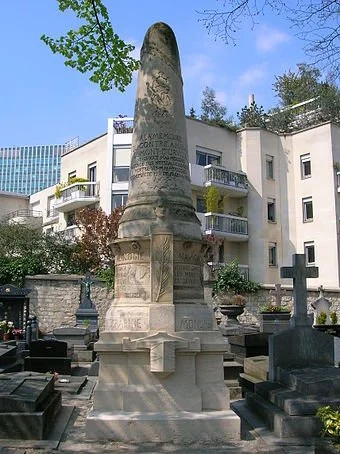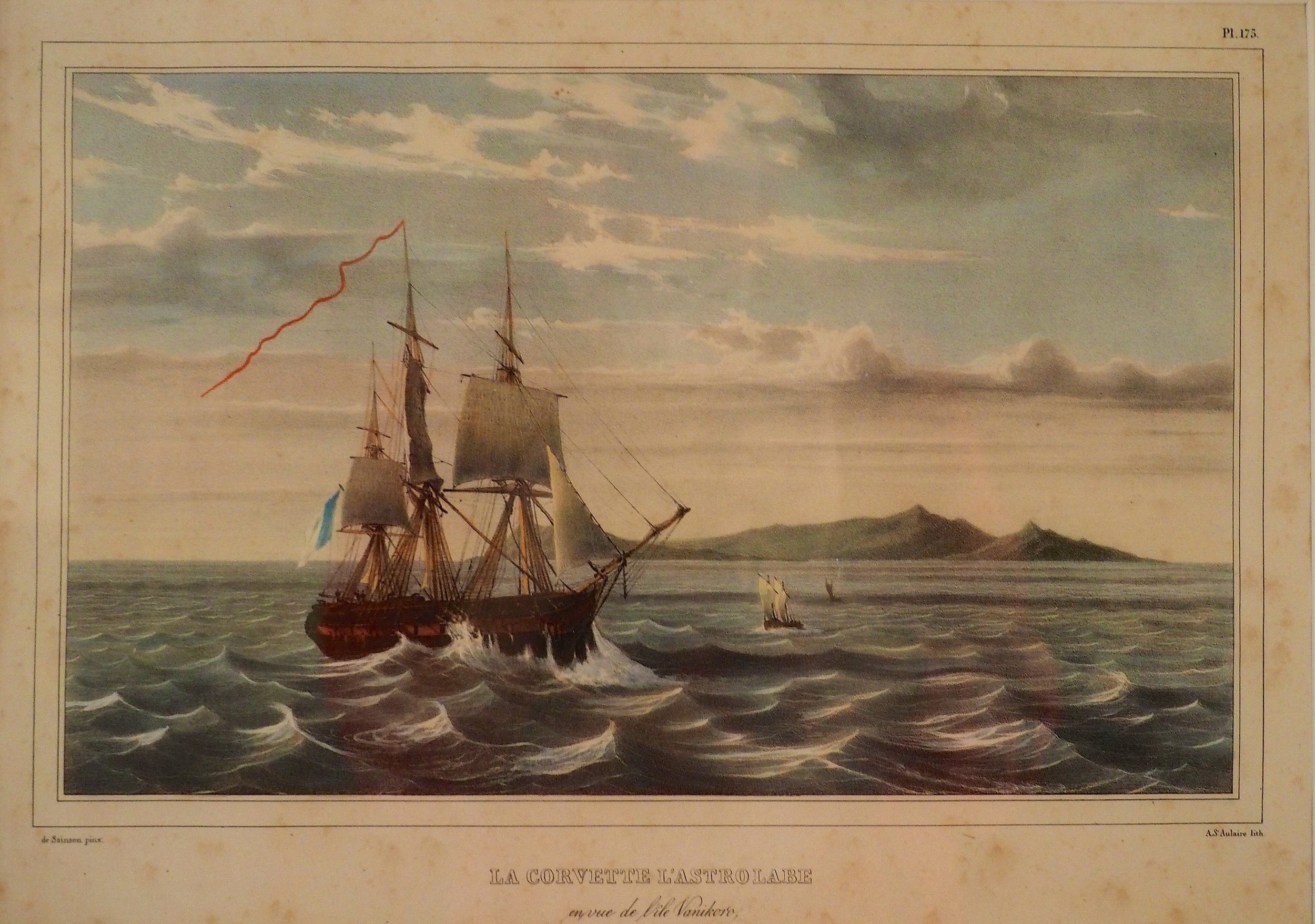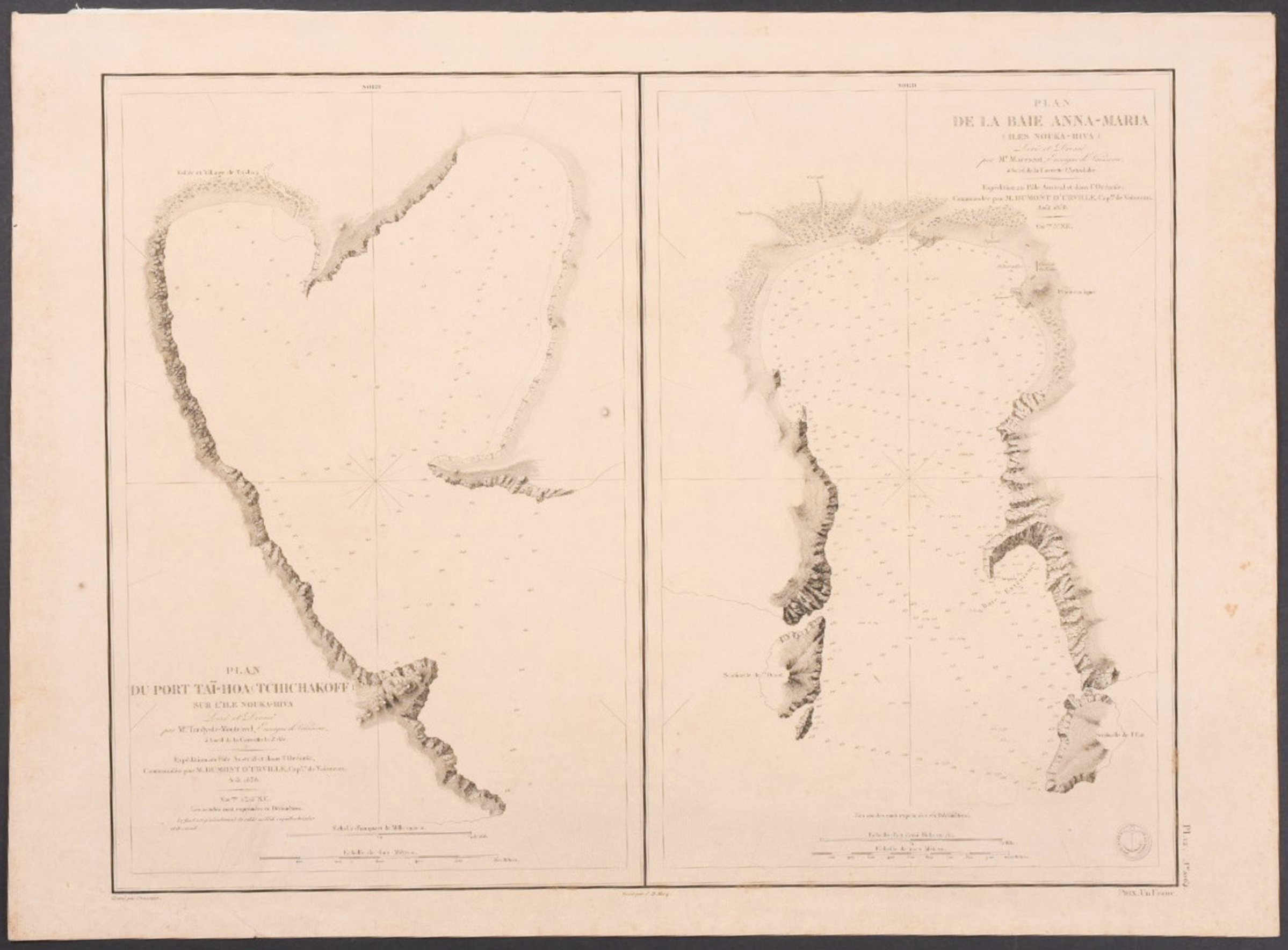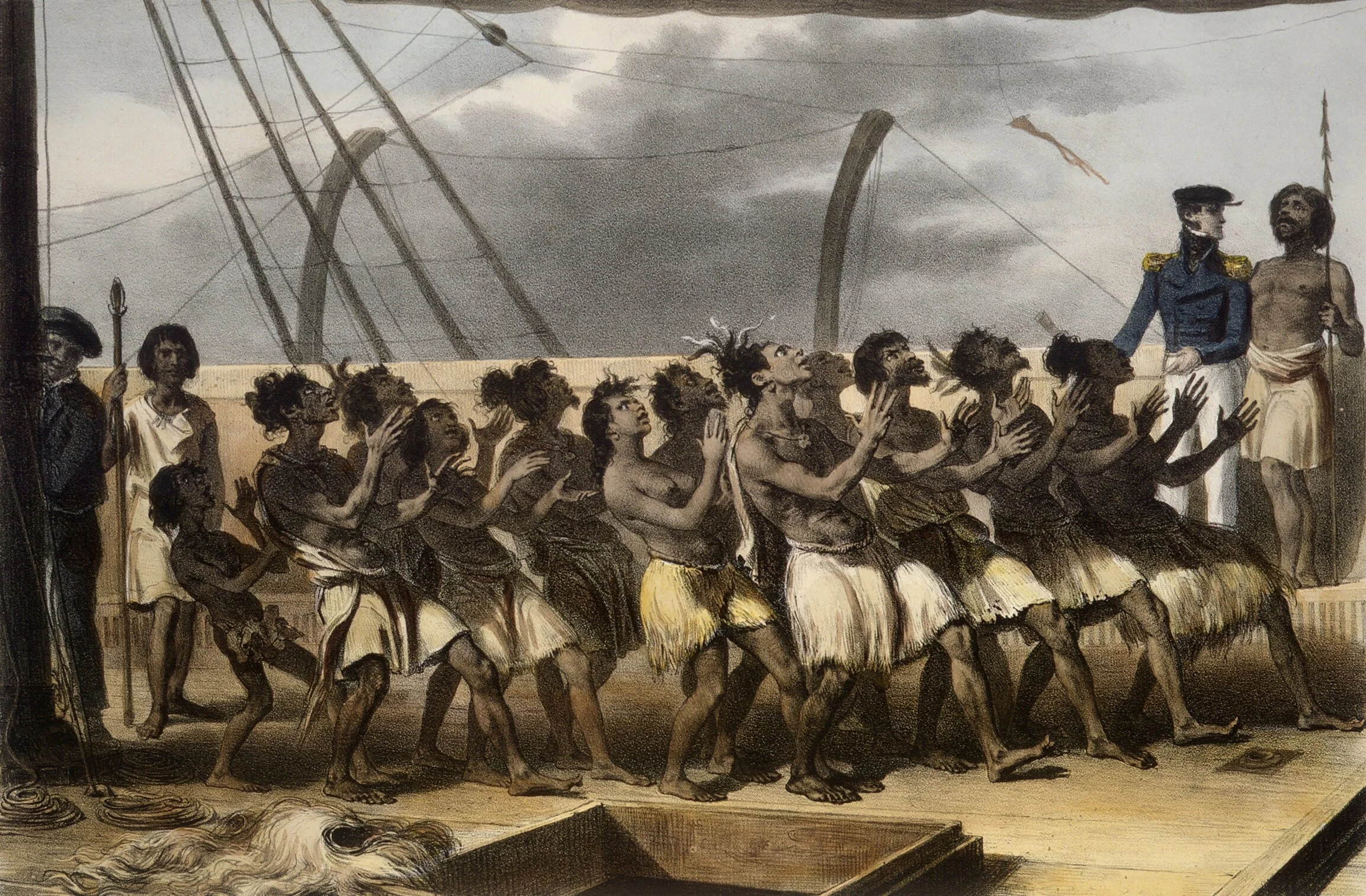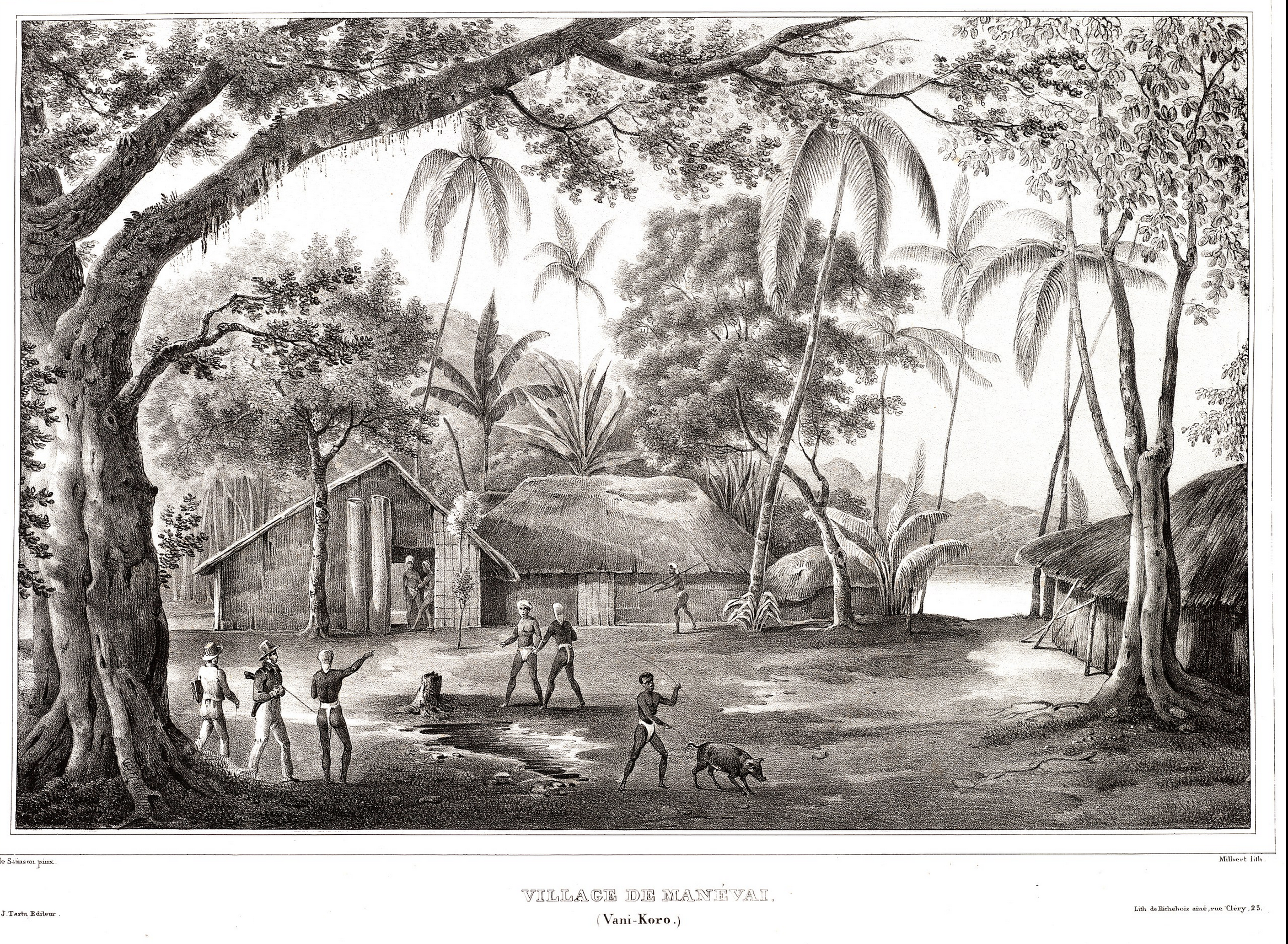D’Urville - the Navigator You’ve Probably Never Heard Of
By Malcolm Lambe
I share my time between Paris and Pittwater. Yeah I know – tough gig but someone’s got to do it. My wife’s French and a few years back we buried her Grandmother next to her Grandfather Pierre Laroque in the historic Montparnasse Cemetery in the heart of Paris.
Grandpapa Pierre was a Resistant and on the Gestapo Hit-List when the RAF plucked him from a field outside Lyon to join DeGaulle in London in 1943. He came back to France after D-Day, landing with DeGaulle on a Normandy beach and set up the French Social Security system after the war. A Place in the 7th Arrondissement is named after him.
A lot of famous people are interred at Montparnasse Cemetery. Amongst them Baudelaire, Samuel Beckett, Jean-Paul Belmondo, Simone de Beauvoir, Constantin Brancusi, André Citroën, Alfred Dreyfus, Serge Gainsbourg – he who smoked five packs of those filthy unfiltered Gitanes a day and once drunkenly said to a 22 year old Whitney Houston...on a live French television show ...“I want to fuck you”.
Other famous graves at Montparnasse are those of Guy de Maupassant, Man Ray, Saint Saëns, Jean-Paul Sartre and Georges Wolinski – the political cartoonist that was assassinated in 2015 at the monstrous Charlie Hebdo massacre.
So my Grandfather-in-law is in good company. Right next to his grave is an obelisk memorial to another famous Frenchman - Jules Dumont D’Urville.
I was reading the inscription when the words “Astrolabe” struck a chord. I remembered she was one of the vessels with the La Perouse Expedition that landed in Botany Bay when the First Fleet were there. The expedition vanished mysteriously in 1788 after leaving Botany Bay on 10 March 1788. King Louis XVI – who had commissioned the expedition often inquired whether any news had come from the expedition, up to shortly before he lost his head to la Guillotine.
In 1819, Dumont d'Urville sailed on board Chevrette to carry out a hydrographic survey of the islands of the Greek archipelago. During a pause near the island of Milos, the local French representative brought to Dumont's attention the rediscovery of a marble statue a few days before by a local peasant. The statue, now known as the Venus de Milo dates from around the year 130 BC.
D’Urville recognised its value and would have acquired it immediately, but the ship's commander pointed out that there was not enough space on board for an object of its size. Moreover, the expedition was likely to proceed through stormy seas that could damage it. D’Urville then wrote to the French ambassador in Constantinople about its discovery. Chevrette arrived in Constantinople on 22 April and D’Urville succeeded in convincing the ambassador to acquire the statue.
Meanwhile the plot thickens. The peasant had sold the statue to a priest who wished to present it as a gift to an interpreter for the Sultan in Constantinople. The French ambassador's representative arrived just as the statue was being loaded aboard a ship bound for Constantinople and persuaded the island's primates (chief citizens not monkeys ) to annul the sale and honour the first offer. This earned D’Urville the title of Chevalier (Knight) of the Legion d’Honneur – the same honour my Grandfather-in-Law shares, the attention of the French Academy of Sciences, promotion to Lieutenant and France gained a new magnificent statue for the Louvre. Voila.
In 1826, Dumont d'Urville was entrusted with a new exploration of the South Seas. He was given command of the corvette La Coquille , renamed L’Astrolabe (an instrument used in navigation for calculating latitude, before the development of the sextant.)
D’Urville, apart from his native French, could speak Latin and Greek, English, German, Italian, Russian, Chinese and Hebrew. During his later travels in the Pacific, thanks to his prodigious memory, he would acquire some knowledge of an immense number of dialects of Polynesia and Melanesia.
Between attempts to reach the Antarctic, d’Urville explored the Pacific including the Marquesas, Tahiti, Samoa, Tonga, Guam, Fiji, New Guinea, Borneo, New Zealand, Tasmania, and the Northern Territory. The charts compiled by the expedition were still in use sixty years later. A secondary purpose of the voyage was to look for remains of the shipwreck of La Perouse and the first L’Astrolabe.
That same year an Irish captain, Peter Dillon, was in the Santa Cruz Islands (now part of the Solomon Islands). Here he bought several swords which he believed had belonged to La Perouse. According to locals, the swords had come from a nearby island called Vanikoro where two large ships had broken up. Among the reefs of Vanikoro, Dillon, and later Dumont d'Urville, discovered anchors and other wreckage. These remains were identified as belonging to L'Astrolabe.
No crew members were ever found, although locals on Vanikoro told Dillon that some of the survivors had built a boat and sailed away, and at least two men allegedly remained for many years on Vanikoro but had died or left some time earlier. Dumont d'Urville oversaw the erection of a monument to the La Perouse expedition on Vanikoro.
It was not until 1964 that the wreck of La Boussole was finally discovered on Vanikoro's reefs.
As a botanist and cartographer, d’Urville gave his name to several seaweeds, plants and shrubs, and places such as d'Urville Island in New Zealand. His expedition assured the position of nearly 200 islands or islets, of which about sixty had not yet appeared on any map. Dumont d'Urville mapped the Loyalty Islands and surveyed the coasts of New Zealand. He undertook an exploration of the Tonga Islands and the Moluccas and his reports allowed the classification of islands in Melanesia, Polynesia and Micronesia.
He’s the navigator and cartographer you’ve never heard of yeah?
Upon his return from a later expedition to Antarctica in 1840 he was appointed a Rear-Admiral and received the Great Gold Medal from the Geographical Society. He was busy publishing his Voyage to the South Pole and Oceania when the poor bastard perished with his wife and 16-year-old son in the Meudon Rail Disaster not far from where I live in Paris. They were coming back from a water display in the lakes of Versailles when the locomotive derailed and the hot coals set fire to the carriages – which were locked. It was the first French railway accident and the deadliest in the world at the time. The fire was so intense that the number of fatalities could not be determined, with estimates varying between 52 and 200 and hundreds of people seriously injured.
The Geographical Society had an inscription affixed to his monument which was considered an insult to his memory and was later erased:
"No Mourning
A little ash
A bit of land
Lots of noise”
Say what? Bit insensitive non? Perhaps it reads better in French.


